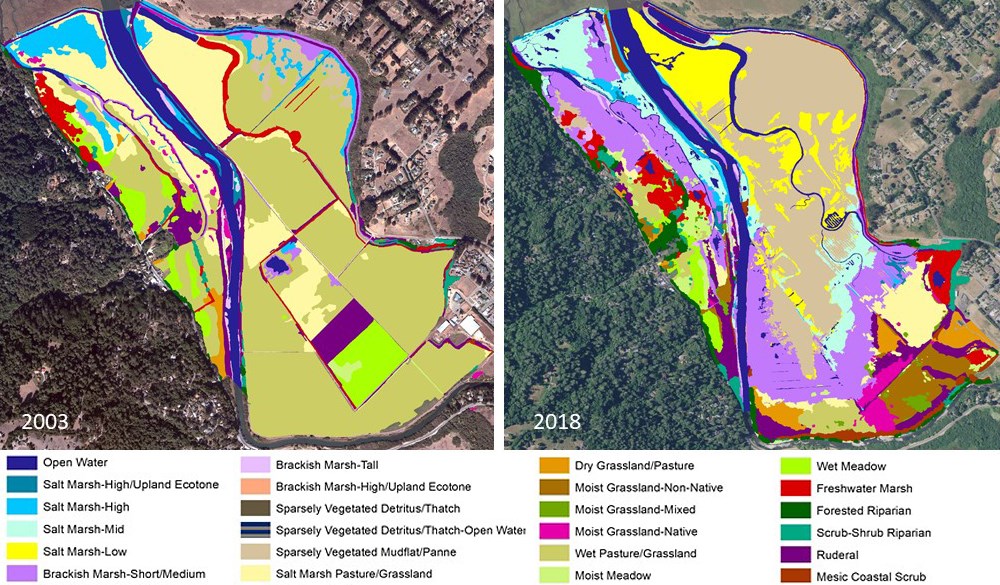Last updated: September 18, 2022
Article
An Update from a Decade of Recovery at the Giacomini Wetlands

NPS Data
November 2018 - October 27, 2018, marked 10 years since the levees were removed as part of the Giacomini Wetlands Restoration Project, a collaborative effort between Point Reyes National Seashore and Golden Gate National Recreation Area. One of the goals of the restoration project was to shift vegetation communities at the site from dairy pasture to tidal salt and brackish marsh. We also hoped to see an increase in native plant-dominated communities.
Vegetation community mapping is intended to give detailed information about the array of plant communities across the landscape. It tells us overall acreage and configuration of different communities and shows how the spatial extent of different types of communities changes over time.
2018 mapping of the Giacomini restoration site showed that salt and brackish marsh continues to expand. These communities have increased 143 acres since pre-restoration mapping in 2003, rising from 9% of the project area to 37%.
A large portion of the increase in salt marsh can be attributed to establishment of native California cordgrass, which now grows in 21% of the project area (as compared to 0.02% prior to restoration). There also was a steep decline in grassland communities and an increase in sparsely vegetated mudflat/panne immediately following restoration, changes that have persisted over the last 10 years. In accordance with restoration goals, we saw non-native-dominated and mixed-nativity communities decrease (from 327 acres in 2008 to 164 acres in 2018), and native-dominated communities increase (from 80 acres in 2008 to 257 acres in 2018).
We still struggle with a number of weedy species in the upland portion of the site and with several patches of perennial pepperweed that have been spreading in the high marsh/upland areas and along Lagunitas Creek. However, restoration has been very successful overall. The site now supports a greater diversity of plant communities, is more similar to native reference marshes, is less weedy, and is a haven for the rare Point Reyes bird’s-beak and Humboldt Bay owl’s-clover. This all points to significant success in meeting our restoration goals and in providing valuable wildlife habitat.
Visit the park webpage on Giacomini Wetlands Restoration Project in the coming weeks for information on other long-term monitoring activities or contact Lorraine Parsons.
